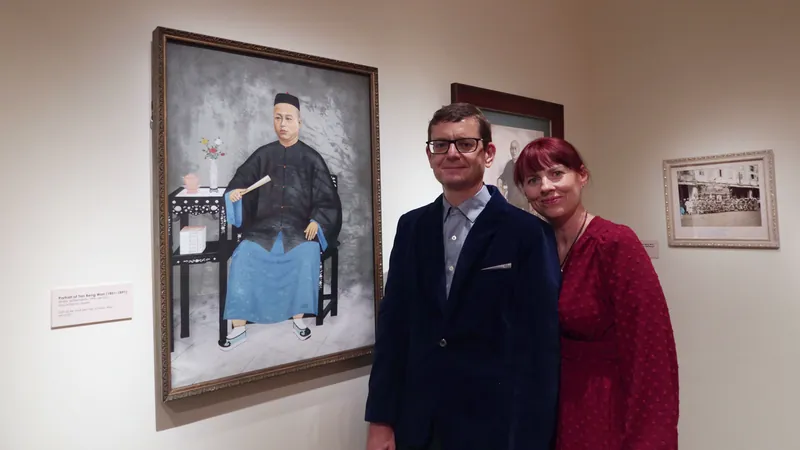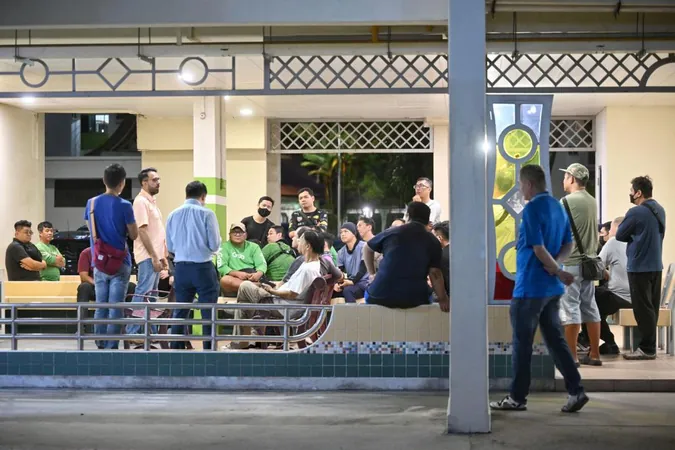
Unlocking the Secrets of Cultural Wonders with Cutting-Edge Technology
2025-06-09
Author: Mei
Discovering Hidden Histories in Museums
As we stroll through museum halls, the enchanting beauty and craftsmanship of artifacts captivate our imaginations. But imagine being able to unravel their secrets—understanding how these magnificent objects were created and the materials that comprise them. This exploration led to the groundbreaking "Inspiring Objects" session, held on May 20, 2025, at the Peranakan Museum, co-organized by the International Atomic Energy Agency (IAEA) and the Singapore Synchrotron Light Source (SSLS).
Bringing Science into Art Preservation
The "Inspiring Objects" session is part of an innovative five-day workshop designed to showcase the latest in accelerator-based heritage science. Scientists, curators, and archaeologists from around the globe gathered to reveal how advanced technologies are transforming our understanding of art and history. Dr. Aliz Simon, a prominent nuclear physicist, remarked on the power of nuclear science in preserving cultural and natural heritage without delving into complex scientific jargon.
Revolutionary Techniques for Analyzing Artifacts
Advanced accelerator technology is now at the forefront of preserving cultural treasures. By employing electromagnetic fields, researchers can propel particles to incredible speeds, revealing critical analytical details about artifacts without damaging them. These techniques delve into layers beneath the surface, uncovering colors and materials invisible to the naked eye.
Case Studies from Around the World
During the session, scientists from 13 countries presented compelling case studies, highlighting the application of accelerator-based methods in revealing intricate details of artifacts. Dr. Agnieszka Banas introduced a fascinating study on a Portrait of Tan Beng Wan, utilizing optical-photothermal infrared (O-PTIR) spectroscopy to detect alterations obscured by time. Her findings unveiled a minute layer of gordaite and crystalline zinc soaps harming the painting's integrity—insights crucial for targeted conservation efforts.
Unraveling Singaporean Heritage
Dr. Krzysztof Banas took the spotlight with his analysis of unique Peranakan beadwork. By using synchrotron-based micro-X-ray fluorescence microscopy, he discovered that the vibrant colors of the glass beads were fading due to potassium ions leaching from the glass structure. This pivotal discovery aids conservators in developing preservation strategies focused on controlling environmental conditions.
Tales of Time: Artefacts Over 45,000 Years Old
The session further highlighted how science could tell stories spanning thousands of years. Among the artifacts discussed was ancient rock art from Indonesia's Maros-Pangkep Karst area, showcasing hand stencils that date back 45,000 years. Researchers concluded that microbial activity contributes to pigment degradation, demonstrating how scientific methods can help preserve these invaluable pieces of history.
Auditory Wonders of the Past
In an exciting exploration of the musical arts, Italian researchers unveiled acoustic secrets of a 17th-century Guarneri cello. By utilizing synchrotron radiation phase-contrast microtomography, they gained insights into the unique coating that enhances the cello's sound quality—a revelation that connects art and science harmoniously.
Innovating for the Future Through History
Chinese researchers showcased the Song Dynasty ceramics, using cutting-edge X-ray imaging techniques to analyze the rare iron oxide crystals in their glazes. This knowledge may guide contemporary material science, illustrating how the past can inform and inspire future innovations.
A Cross-Disciplinary Voyage Through Time
The "Inspiring Objects" session offered an enlightening journey across cultures and eras, united by the belief that every object has a story. Through the lens of science, these narratives can be revitalized, revealing new chapters that enhance our understanding of history and heritage.


 Brasil (PT)
Brasil (PT)
 Canada (EN)
Canada (EN)
 Chile (ES)
Chile (ES)
 Česko (CS)
Česko (CS)
 대한민국 (KO)
대한민국 (KO)
 España (ES)
España (ES)
 France (FR)
France (FR)
 Hong Kong (EN)
Hong Kong (EN)
 Italia (IT)
Italia (IT)
 日本 (JA)
日本 (JA)
 Magyarország (HU)
Magyarország (HU)
 Norge (NO)
Norge (NO)
 Polska (PL)
Polska (PL)
 Schweiz (DE)
Schweiz (DE)
 Singapore (EN)
Singapore (EN)
 Sverige (SV)
Sverige (SV)
 Suomi (FI)
Suomi (FI)
 Türkiye (TR)
Türkiye (TR)
 الإمارات العربية المتحدة (AR)
الإمارات العربية المتحدة (AR)